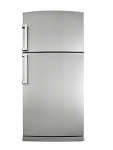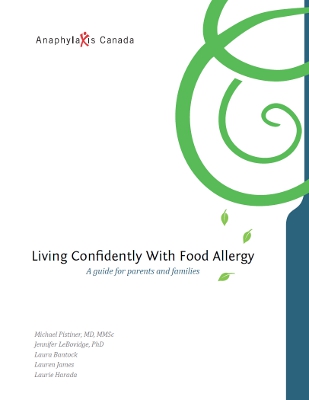
Remember! The kitchen refrigerator is a great place to post a copy of your child’s food allergy emergency action plan.
Home is the perfect place for you and your family to learn how to manage food allergy, because so much more is under your control. You decide which foods enter your home, and you can set up household rules to prevent cross-contamination when storing, preparing and serving food. You also have more time to read food labels and teach your child this skill in a relaxed setting. Your child can also be involved in meal planning at home. They will gradually learn safe practices, such as replacing ingredients in favourite recipes to make them safe to eat.
Create a plan that works for your family. Decide whether or not your child’s allergens will be allowed into your home. You might consider the age of the child with allergies and their siblings. Young children are often messy eaters and put their hands in their mouths. It is also important to keep the dietary needs of other family members in mind when making these choices. In some cases it will not be practical to keep an allergen completely out of the home.20
Take steps to avoid cross-contamination20
- Be careful about sharing food, napkins, dishware, cups and utensils (forks, knives, spoons).
- Ask everyone to wash their hands before and after preparing food.
- Ask everyone to wash their hands before and after meals.
- Keep foods that do not contain your child’s allergens away from those that do. For example, have a special shelf for your child’s food in cupboards. Do not store their food on shelves below those where food with their allergens are kept in case of spillage.
- Remember to keep the ingredient labels if you separate large packages of food into smaller portions.
- Clean surfaces (e.g. kitchen counter, table top, microwave) and use clean pots, pans and utensils when preparing food.
- Prepare allergen-free food before food that contains your child’s allergens. Set their dish aside and cover it in case other food splatters during cooking.
- Eat in certain areas of the home only (e.g. kitchen or dining table).
- Carefully label containers that contain your child’s leftovers.
- Keep some ready-to-serve foods on hand that are safe for your child when you are too busy to cook.
Be ready to treat an allergic reaction
- Keep your child’s auto-injectors and any other medications recommended by your doctor handy. Make sure they are out of reach of young children and that family members know where they are kept.
- Post a copy of your child’s emergency plan, including the phone number of your local emergency services.
20. Muñoz-Furlong, A. “Daily Coping Strategies for Patients and Their Families.” Pediatrics 11.3 (2003): 164-1664.
